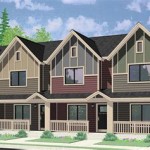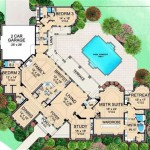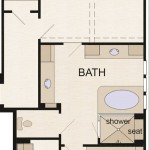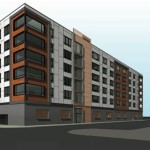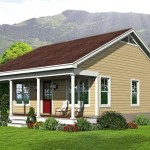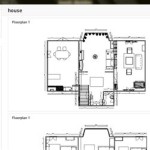House Plans Under 1800 Square Feet: Maximizing Space and Efficiency
For many prospective homeowners, the allure of a large, sprawling residence can be tempting. However, the reality of budget constraints, maintenance responsibilities, and evolving lifestyle preferences often leads to a compelling alternative: the efficient and well-designed small to mid-sized home. House plans under 1800 square feet represent a significant segment of the residential market, offering a balance between comfortable living space and manageable cost. These designs prioritize efficiency, functionality, and smart use of every square inch, enabling homeowners to enjoy a fulfilling living experience without the burden of excessive square footage.
The appeal of smaller homes extends beyond simply affordability. They often promote a more sustainable lifestyle, reducing energy consumption and minimizing the environmental footprint. Furthermore, smaller homes can encourage more intentional living, prompting homeowners to declutter and prioritize possessions, leading to a more simplified and organized existence. This article will explore the key features, advantages, and design considerations associated with house plans under 1800 square feet.
Cost-Effectiveness and Financial Benefits
The primary driver for many individuals choosing a smaller home is the significant cost savings. The initial construction cost is substantially lower due to reduced material requirements, labor hours, and land usage. This reduced upfront investment translates to smaller mortgage payments, lower property taxes, and decreased insurance premiums. Over the lifespan of homeownership, these savings can accumulate significantly, freeing up financial resources for other investments, travel, or retirement planning.
Beyond the initial construction phase, smaller homes also offer ongoing cost savings. Heating and cooling costs are inherently lower due to the reduced volume of space requiring climate control. Similarly, maintenance costs, such as roof repairs, exterior painting, and yard upkeep, are typically less expensive compared to larger homes. These reduced operating expenses contribute to a more financially sustainable living situation.
From a developer's perspective, building smaller homes can also be more financially viable. Smaller lot sizes can be utilized, maximizing land usage and potentially increasing the number of buildable units within a specific area. This can lead to higher profitability and a greater ability to offer affordable housing options to a broader range of potential buyers.
Efficient Design and Space Optimization
The success of a house plan under 1800 square feet hinges on efficient design and the strategic utilization of every available space. Open floor plans are a common feature, seamlessly connecting living areas, dining spaces, and kitchens to create a sense of spaciousness. By eliminating unnecessary walls and partitions, natural light can flow freely throughout the home, further enhancing the perception of openness.
Smart storage solutions are crucial in smaller homes. Built-in shelving, strategically placed cabinetry, and multi-functional furniture can maximize storage capacity without compromising living space. Vertical space can also be effectively utilized with taller ceilings and upper-level storage solutions. Under-stair storage and loft spaces can provide valuable areas for stowing away items, keeping the main living areas clutter-free.
Careful consideration of room dimensions and furniture placement is essential. Selecting furniture that is appropriately scaled to the size of the rooms can prevent the space from feeling cramped. Multi-functional furniture, such as sofa beds or dining tables with extendable leaves, can adapt to different needs and optimize space utilization. Furthermore, strategic use of mirrors can create the illusion of greater space and reflect light, making the rooms feel brighter and more airy.
Outdoor living spaces can also extend the perceived living area of a smaller home. Patios, decks, and porches provide opportunities for relaxation and entertainment, effectively blurring the line between indoor and outdoor living. These spaces can be designed as extensions of the interior, with comfortable seating, outdoor fireplaces, and even outdoor kitchens.
Lifestyle Benefits and Environmental Considerations
Choosing a smaller home often reflects a conscious decision to simplify one's lifestyle. The reduced space encourages homeowners to declutter and prioritize possessions, leading to a more organized and less cluttered living environment. This can contribute to a sense of peace and tranquility, reducing stress and promoting a more mindful way of living. Less space to clean and maintain also translates to more free time for pursuing hobbies, spending time with loved ones, or simply relaxing.
Smaller homes are inherently more environmentally friendly than larger homes. They require less energy for heating, cooling, and lighting, resulting in lower carbon emissions and reduced reliance on fossil fuels. The smaller footprint of the home also minimizes the environmental impact on the surrounding land. Choosing sustainable building materials and incorporating energy-efficient appliances can further enhance the environmental benefits of a smaller home.
Living in a smaller home can also foster a greater sense of community. With less space to occupy and maintain, homeowners may be more inclined to spend time outdoors, interacting with neighbors and participating in local activities. This can lead to stronger social connections and a greater sense of belonging within the community.
The design flexibility offered by house plans under 1800 square feet is also noteworthy. Whether a homeowner prioritizes a modern, minimalist aesthetic or a cozy, traditional style, there are countless design options available to suit individual preferences. The smaller scale of the home allows for greater customization and personalization, enabling homeowners to create a space that truly reflects their unique personality and lifestyle.
Ultimately, the decision to build or purchase a house under 1800 square feet is a personal one, based on individual needs, priorities, and lifestyle preferences. However, the numerous benefits associated with smaller homes, including cost-effectiveness, efficient design, and environmental sustainability, make them a compelling option for a wide range of prospective homeowners. By prioritizing smart design and maximizing space utilization, it is possible to create a comfortable, functional, and aesthetically pleasing living environment within a smaller footprint.
Careful planning and consideration are key to ensuring the success of a smaller home. Working with an experienced architect or designer is crucial to developing a house plan that effectively meets the homeowner's specific needs and budget. Thoroughly assessing lifestyle requirements, anticipating future needs, and carefully selecting materials and finishes are all essential steps in the process. With thoughtful planning and execution, a house under 1800 square feet can provide a fulfilling and sustainable living experience for years to come.
Furthermore, exploring various floor plan options is crucial. Many designs offer different layouts, ranging from single-story ranch-style homes to two-story structures. Each option presents unique advantages and disadvantages in terms of space utilization, accessibility, and aesthetic appeal. Consider the needs of all occupants, including elderly individuals or those with mobility challenges, when selecting a floor plan. Single-story homes often offer greater accessibility, while two-story homes can maximize the use of a smaller lot.
Finally, remember that smaller homes don't necessarily mean sacrificing style or luxury. High-end finishes, carefully selected materials, and thoughtful design details can elevate the aesthetic appeal of a smaller home, creating a sophisticated and inviting living space. The key is to prioritize quality over quantity and to focus on creating a space that is both functional and beautiful.
1800 Sq Ft Country Ranch House Plan 3 Bed Bath 141 1175

One Story 1 800 Square Foot Traditional House Plan 62427dj Architectural Designs Plans

House Plan 59084 Traditional Style With 1800 Sq Ft 3 Bed 2 Ba

3 Bed Modern Farmhouse Plan With Just Over 1 800 Square Feet Of Living Space And A Home Office 56500sm Architectural Designs House Plans

House Plan 82350 Ranch Style With 1800 Sq Ft 3 Bed 2 Bath

1800 Square Feet Home Design Ideas Small House Plan Under Sq Ft

Single Story House Plans 1800 Sq Ft Arts New Farmhouse

1800 Sq Ft Country House Plan 3 Bedroom 2 Bath 141 1084

House Plan 3 Beds 2 Baths 1800 Sq Ft 17 2141 Floor Plans Ranch One Story

Open Floor Plan Design Under 1800 Square Foot With Outdoor Living Area 7217

